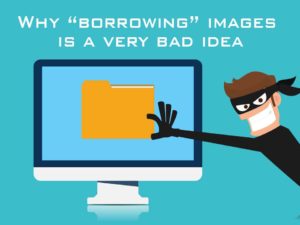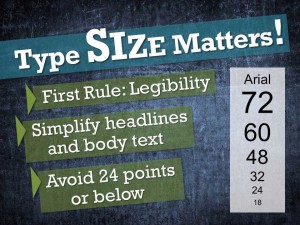Why “borrowing” images is a very bad idea
James asked “Can I use images I download online – like from Google?” James was attending my workshop about upgrading PowerPoint presentations and visuals. I had discussed one of my core concepts: “Use big, bold images” to create powerful slides. He wanted to access and use top-quality images for his slides and I think he suspected that Google Images was not the right place to get them. We went into a brief discussion about intellectual property rights, lawyers and nasty demand letters.
The simple fact is almost all the images you might run across on the web are owned by other people and many of them have hungry lawyers just waiting to send you a letter and demand payment. Even though most slide decks never venture beyond the room they were designed to be presented in — don’t do it. Don’t use images for which you don’t have the rights – especially in anything that could be construed as a commercial setting.
As a point of policy, I tell my clients that I own usage rights for every image in their presentation.
I came across a great article in Fast Company by Steven Melendez recently that talked about software companies that have developed bots that search the web for their photographer clients’ images and then refer them to legal action — It was quite a wakeup call. Read the article here…
https://www.fastcompany.com/40494777/here-come-the-copyright-robots-for-hire-with-lawyers-in-tow
So, the obvious question becomes “How do you get quality, licensed images?” The answer is simple: Pay for them. Search for stock photography sources and you will come up with the likes of Adobe Stock, Shutterstock, 123RF Stock Photos, Deposit Photos, iStock Photo, Getty Images and Pexels (Pexels offer a limited amount of free images). Most of them are moderately priced and have high quality photographs and illustrations.
An additional benefit of this is that with a little effort you can find very high quality, high resolution images that elevate the power and clarity of your presentation. Plus, that avoids the whole mess with lawyers.
That sounds like a good idea to me.



